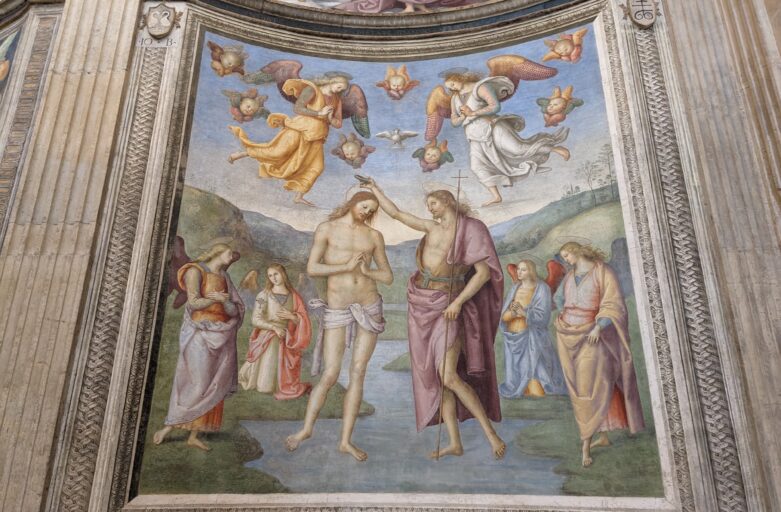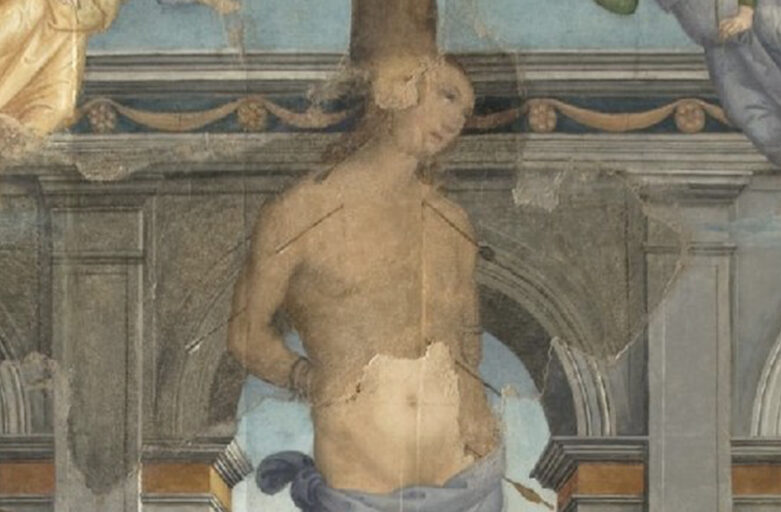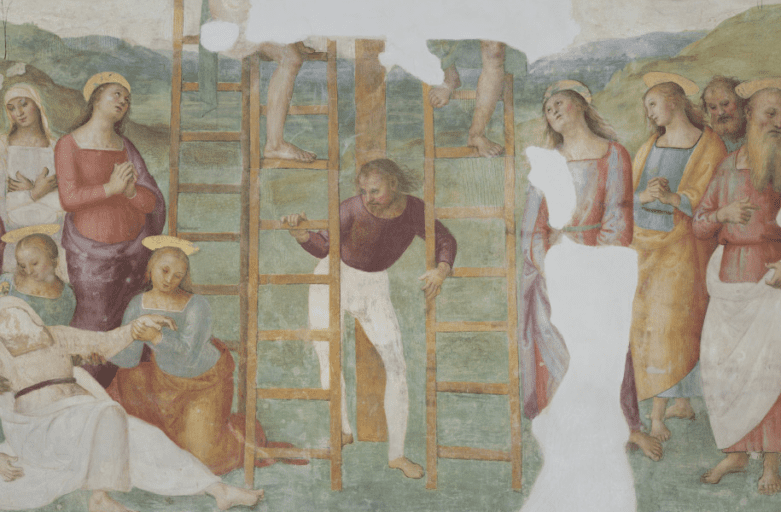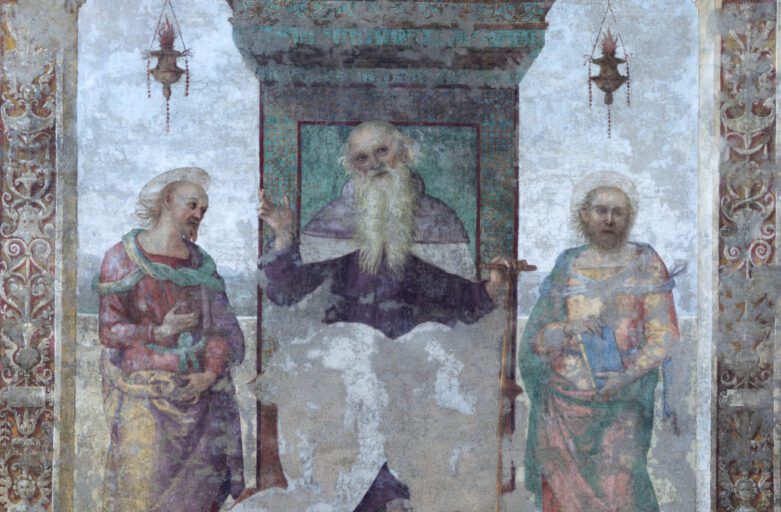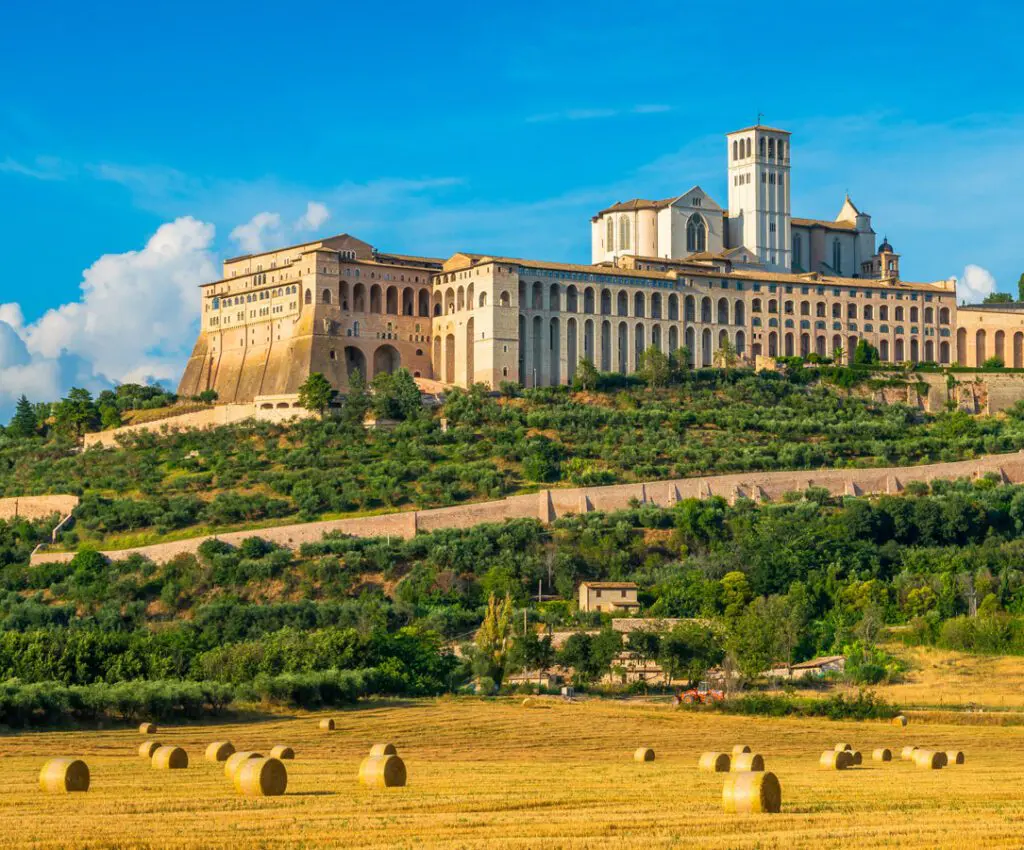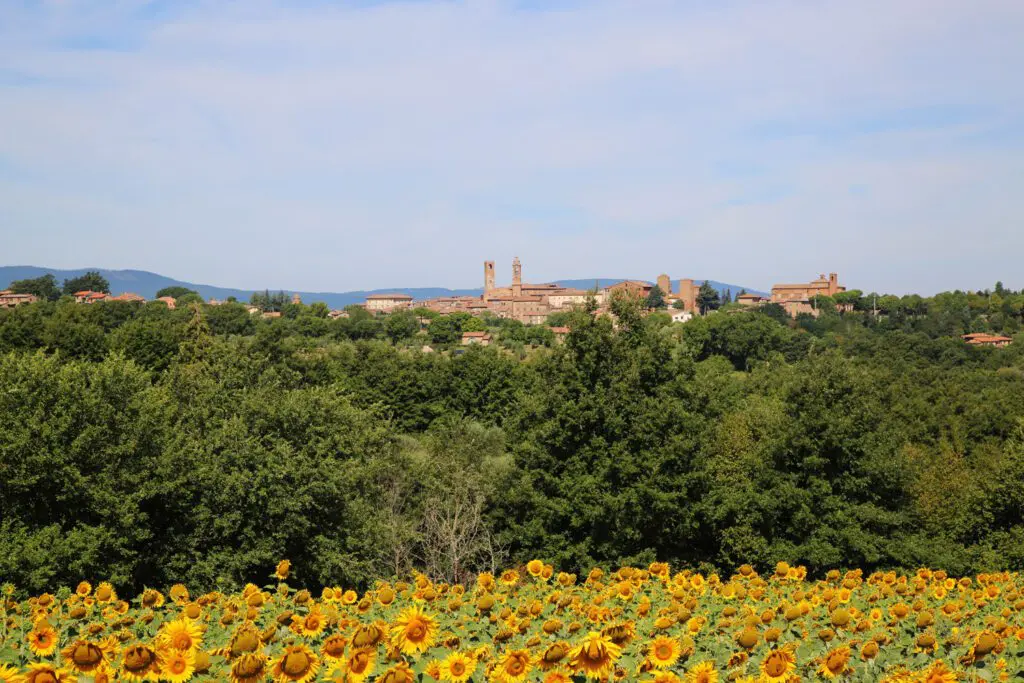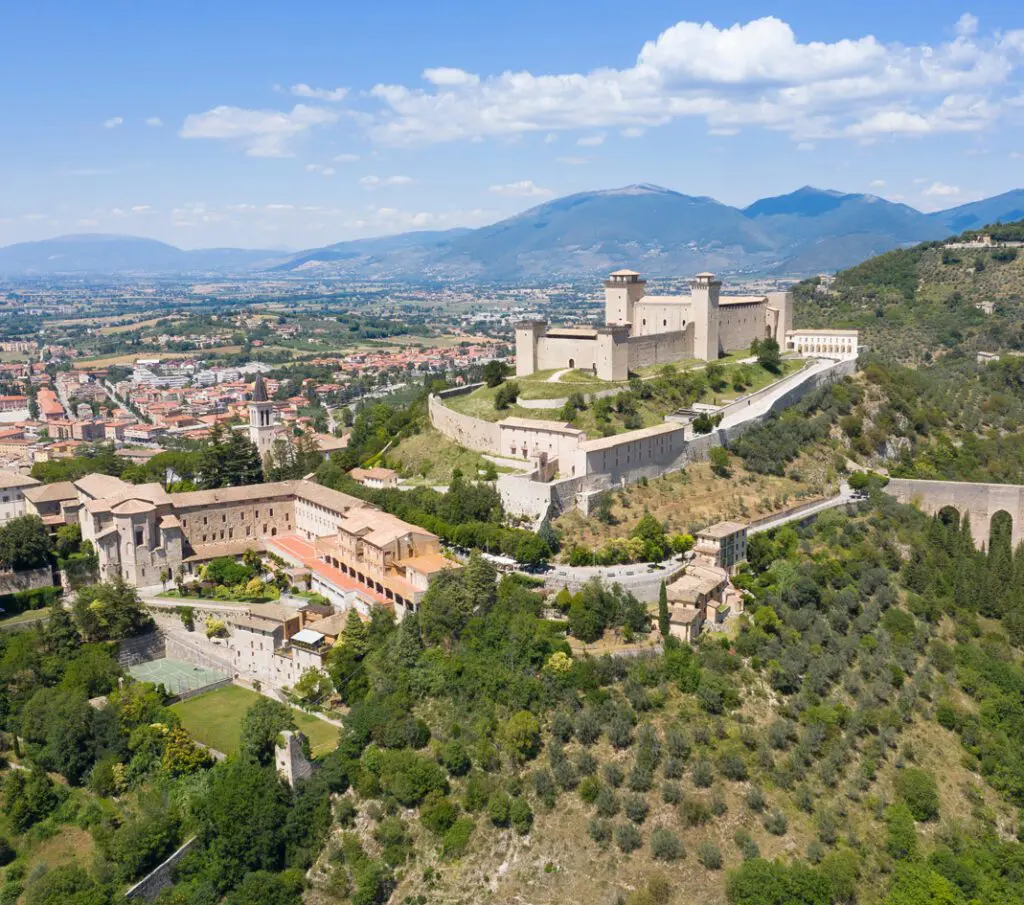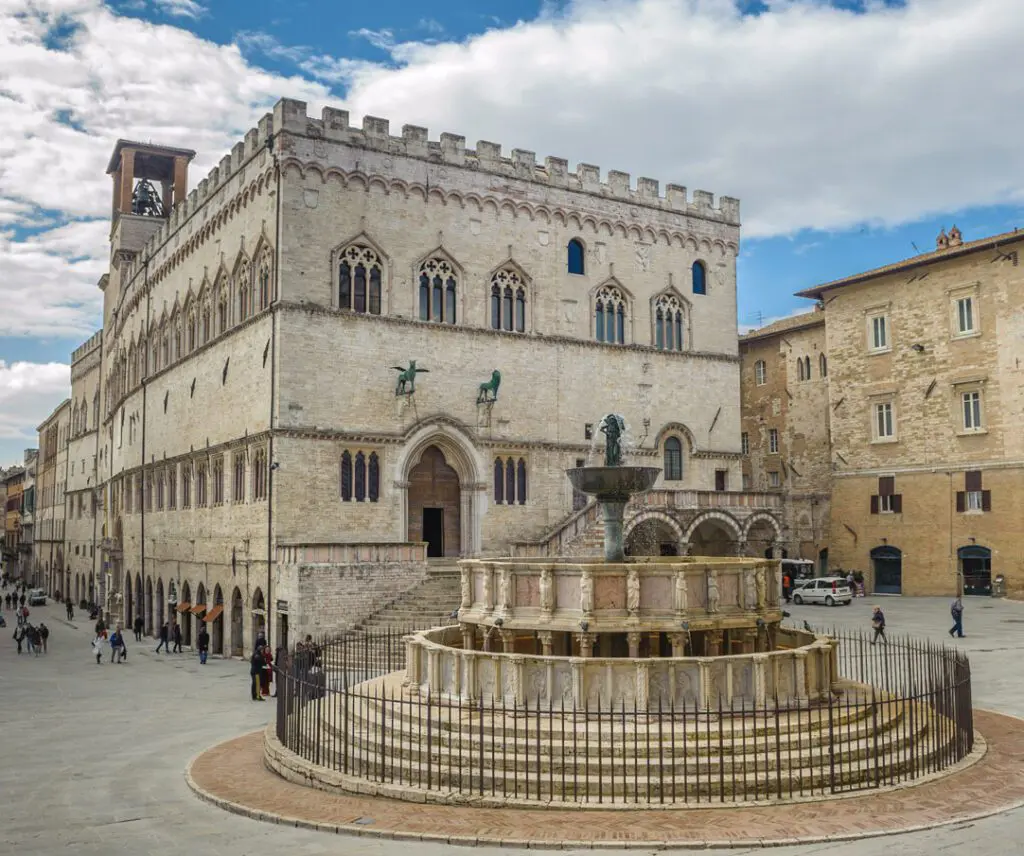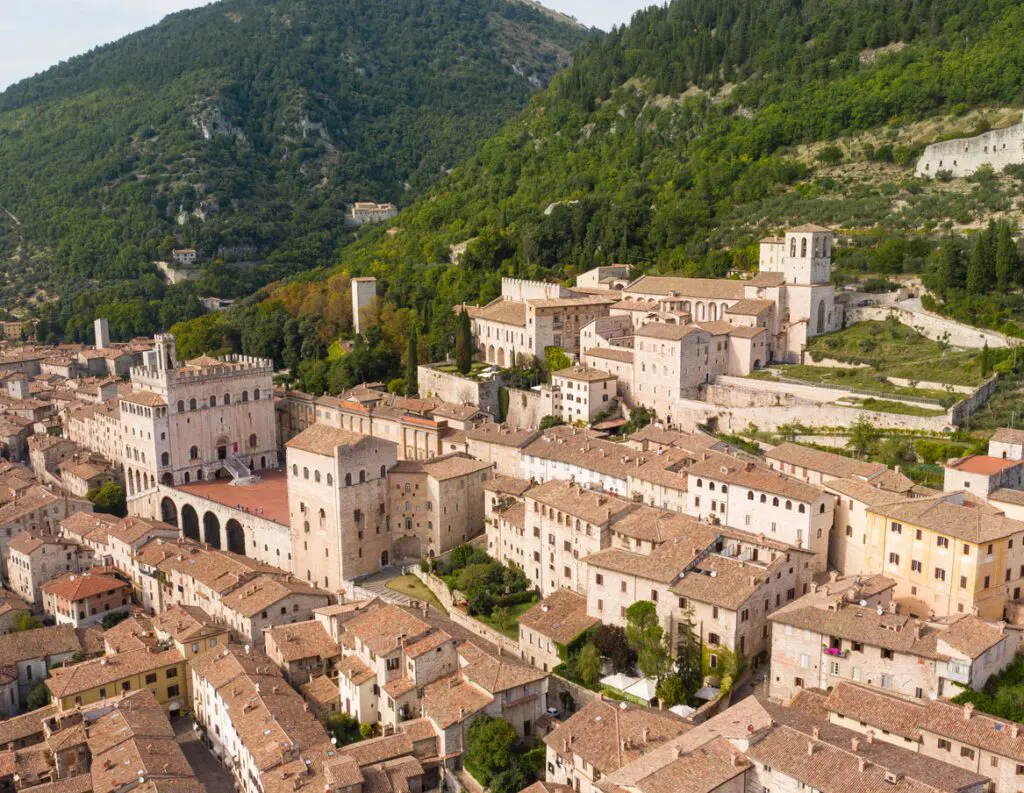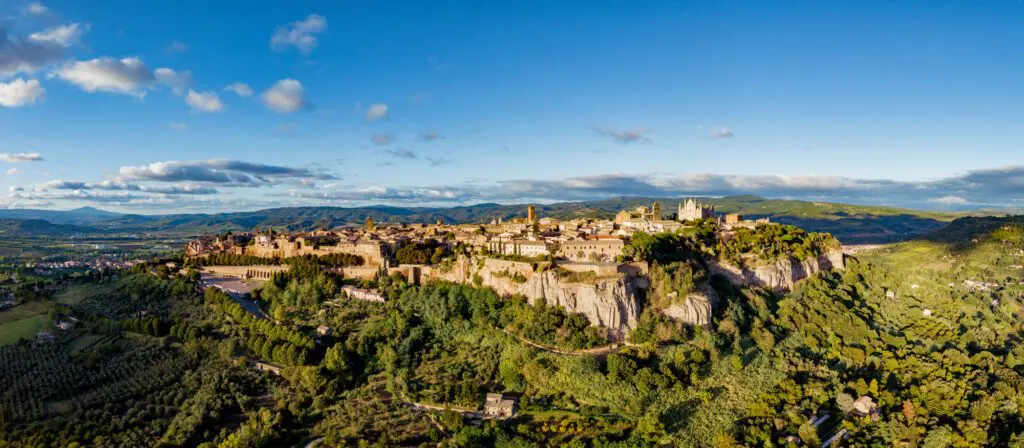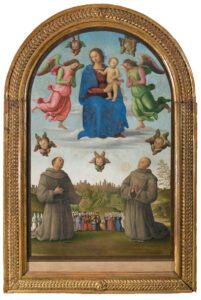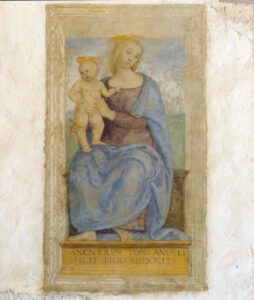There also is a fresco by Pietro “Perugino” Vannucci inside the Oratorio della Nunziatella (oratory, i.e. small church, dedicated to the Annunciation) in Foligno, Umbria. It shows The Baptism of Christ, and was commissioned in 1507 by Giovanni Battista Morganti as an embellishment for their family chapel.
The Oratory
The small church was built in the wake of an extraordinary event that had taken place in 1489. In a picture inside some Nicolò di Giacomo’s house, in fact, the eyes of the Virgin of the Annunciation started to water. The house was therefore bought by the City Hall, and a rectangular place of worship was built there, then consecrated in 1494.
That picture of Mary is still kept there, in a noticeable two-party, wooden frame. On the other side of the frame an angel was depicted, but the work has unfortunately been stolen.
Commissioned by the Morganti family
Giovanni Battista Morganti commissioned Perugino to decorate their family chapel in the years that followed the building of the Nunziatella oratory. The chapel is dedicated to Saint John the Baptist, precisely the client’s patron. Top left, on the frame enclosing the main scene, the emblem of the Morganti family can be seen: two storks on a black and silver background. On the frame that divides the main scene from the upper lunette a sentence is written, DEO ET BEATO IOANNI BATTISTAE SACRUM PIETATE IOANNIS BAPTISTAE MORGANTI, “Consecrated to God and the blessed John the Baptist by the devotion of Giovanni Battista Morganti.”
The composition
The painting is structured in well balanced, symmetrical way, following a perfectly geometric perspective. The protagonists, Jesus and John the Baptist, are captured in the instant of the baptism.
On closer inspection, the anatomy of Christ shows that Perugino’s figures are inspired to ancient Greek and Roman statues. Both men stand with their feet in the waters of the Jordan River, encircled by praying angels who wear many-colored clothes. At top center, the Holy Spirit appears in the shape of a dove.
Inside the upper lunette the blessing God the Father is depicted, keeping the world globe in his hand and flanked by angels who carry white lilies, the symbol of purity.
In the background we see a typical Umbrian landscape with its smooth “hill line,” rendered by Perugino in delicate hues. As is often the case, here too the artist resorts to an atmospheric perspective by gradually shading the colors in the direction of the mountains and sky at the horizon.
More Perugino versions of The Baptism of Christ
The Foligno fresco can be put in relation with three more Perugino works on the same subject. There are both a painting with the same title and a section of the St. Augustine Polyptych at the National Gallery of Umbria, Perugia; as for the third version, it can be admired inside the cathedral in Città della Pieve. All of them have as their prototype the Baptism of Christ in the Sistine Chapel, that had been frescoed by Pietro Vannucci in 1482 or so.
Scopri le testimonianze del Perugino oggi
Percorsi e itinerari alla scoperta delle opere del divin pittore
